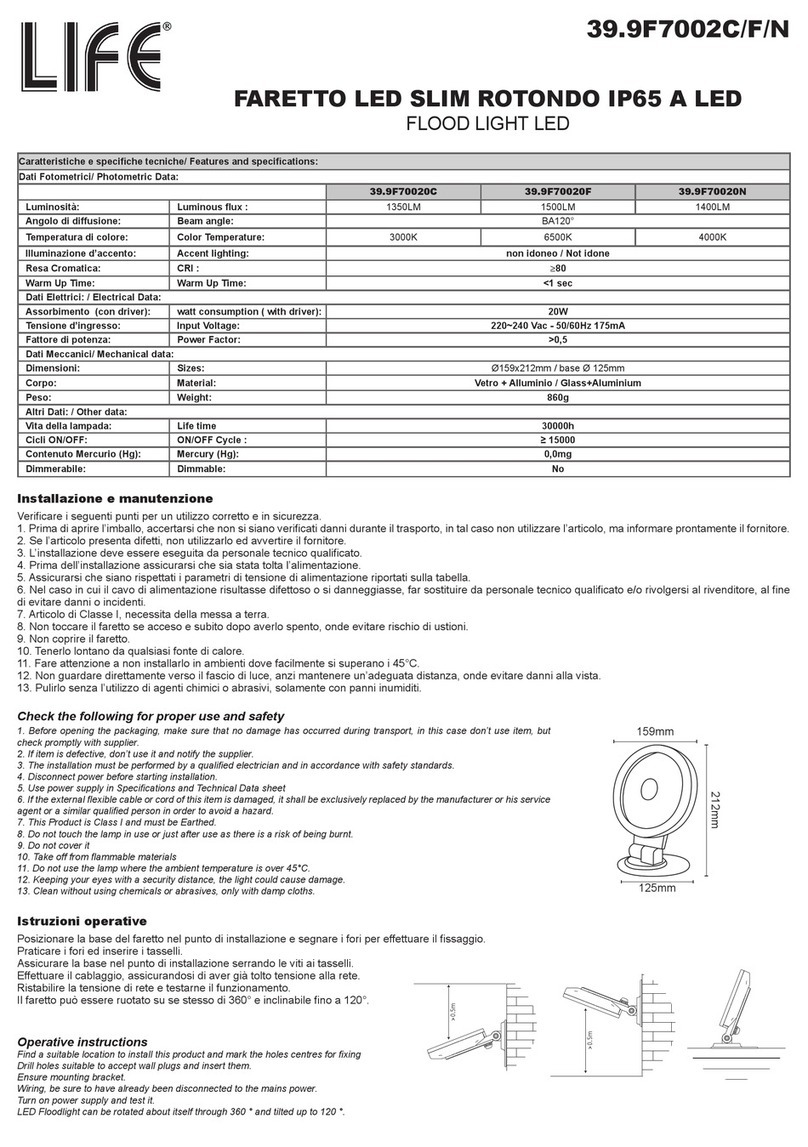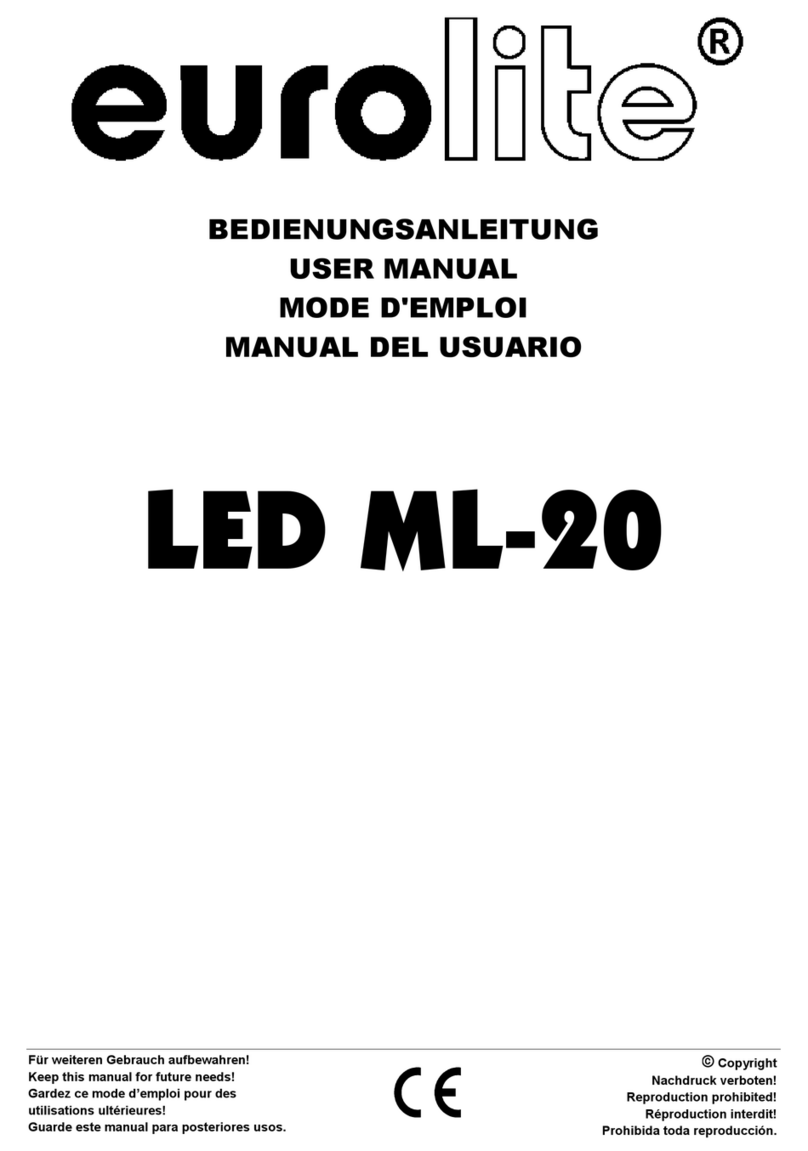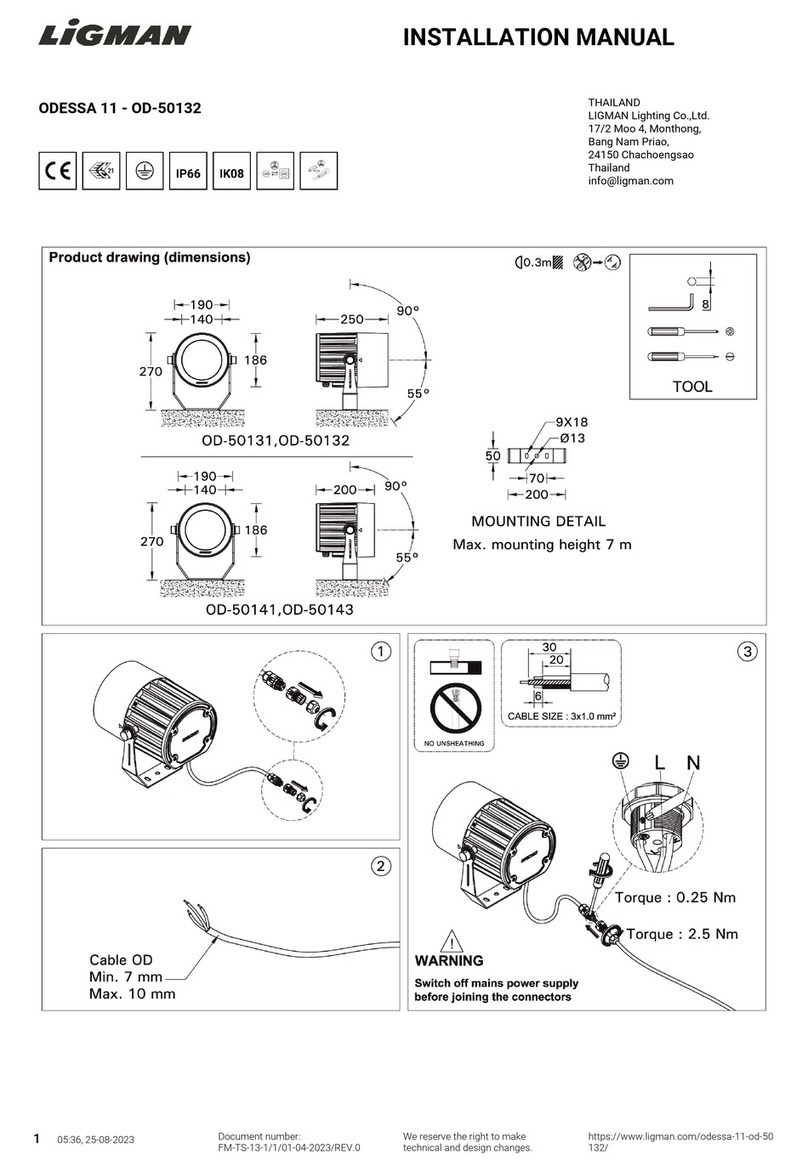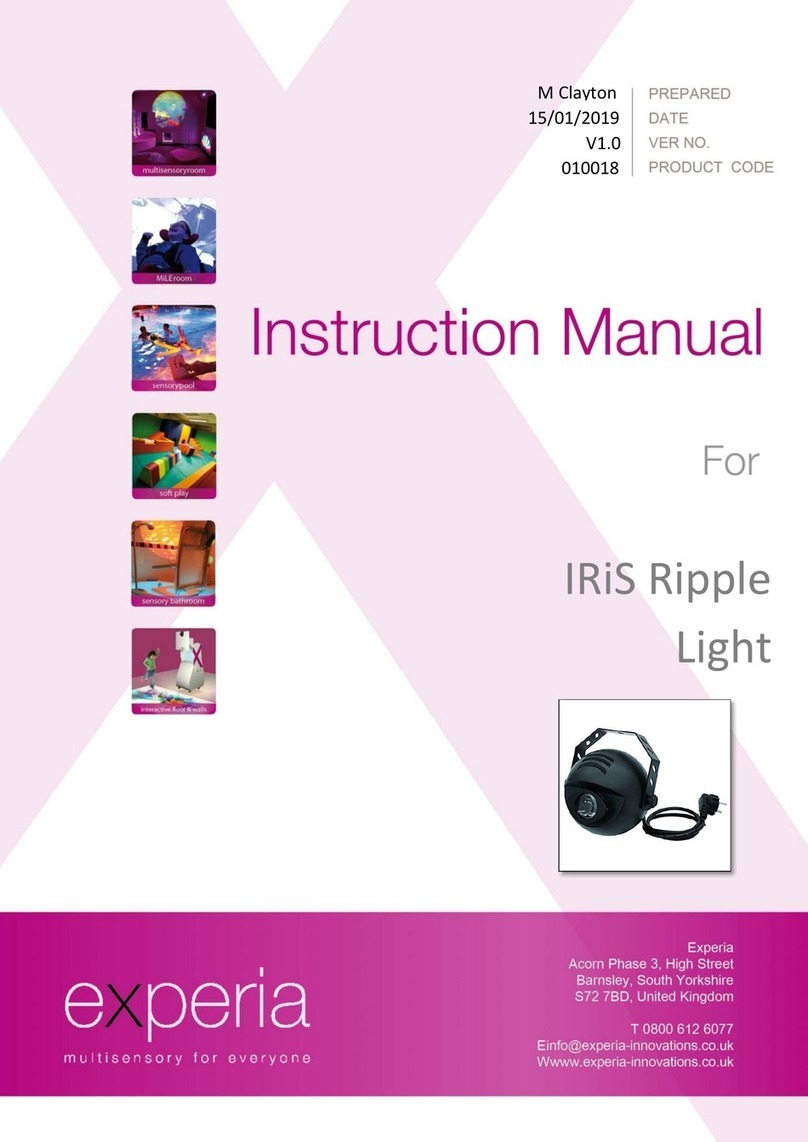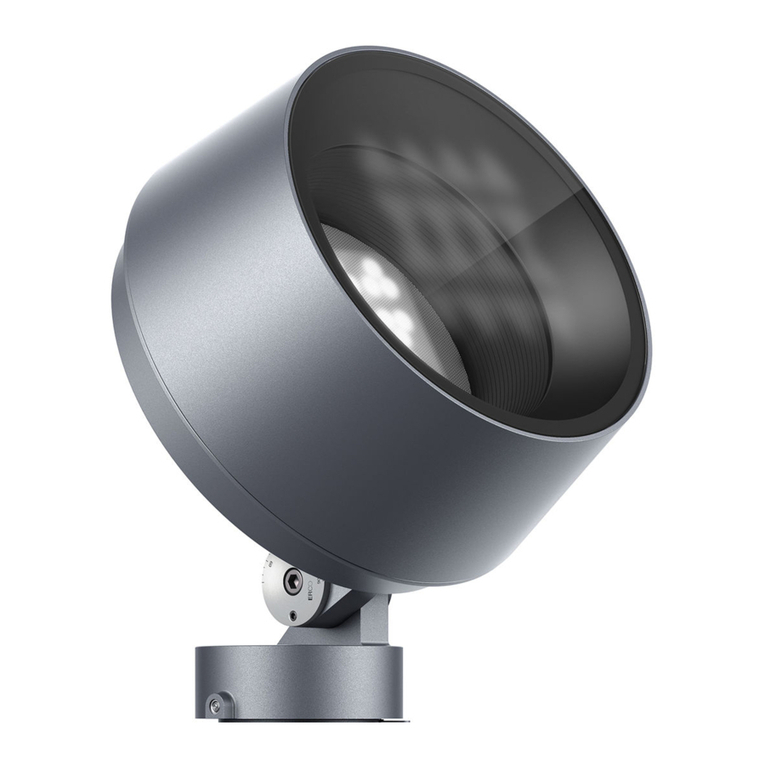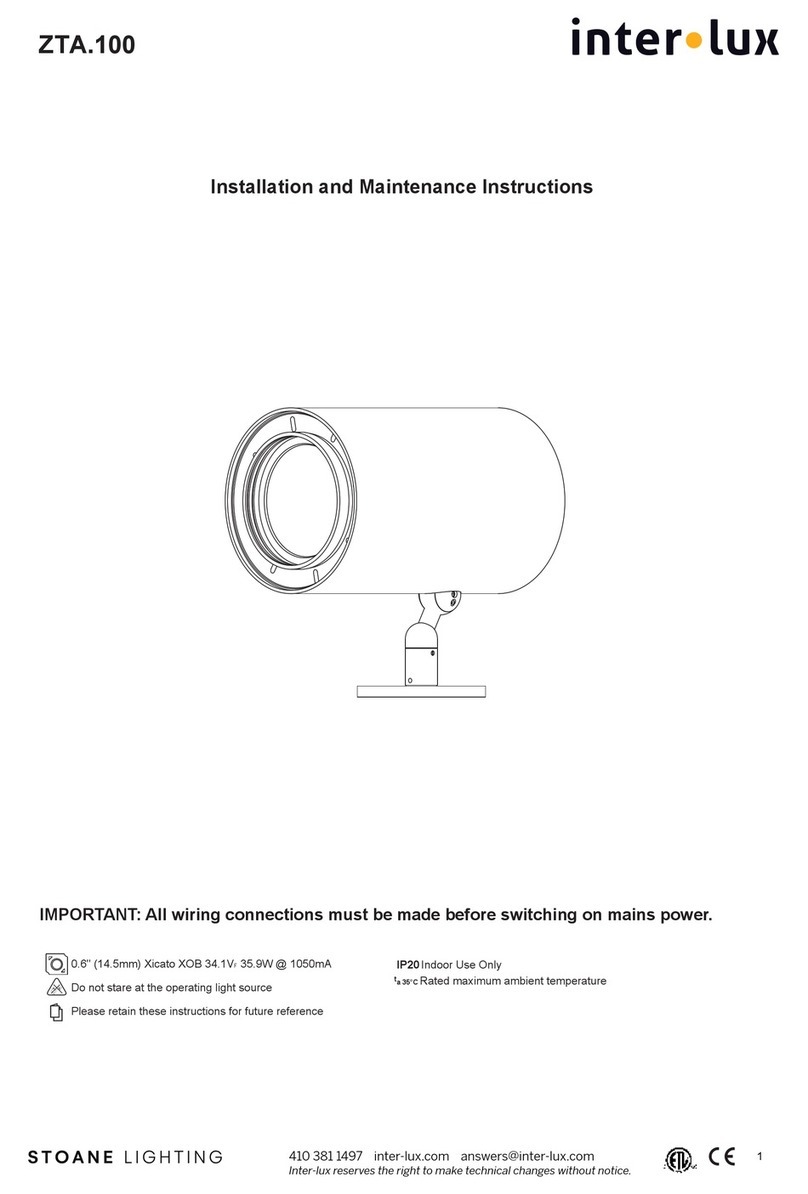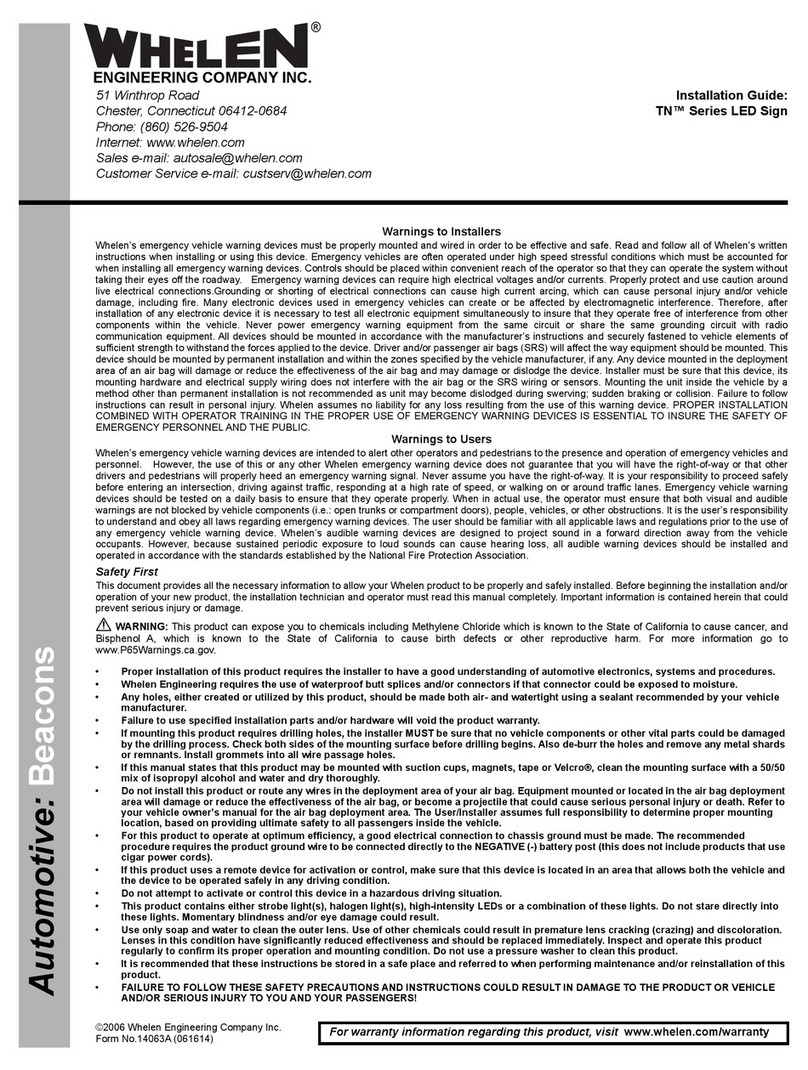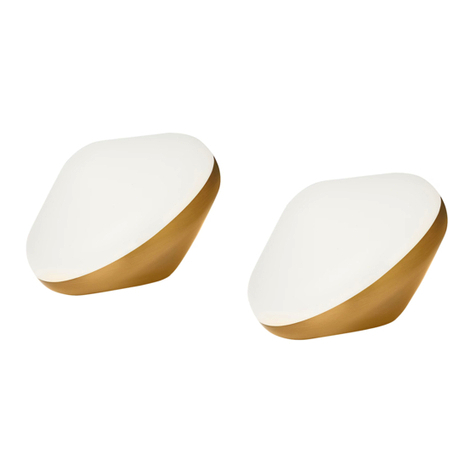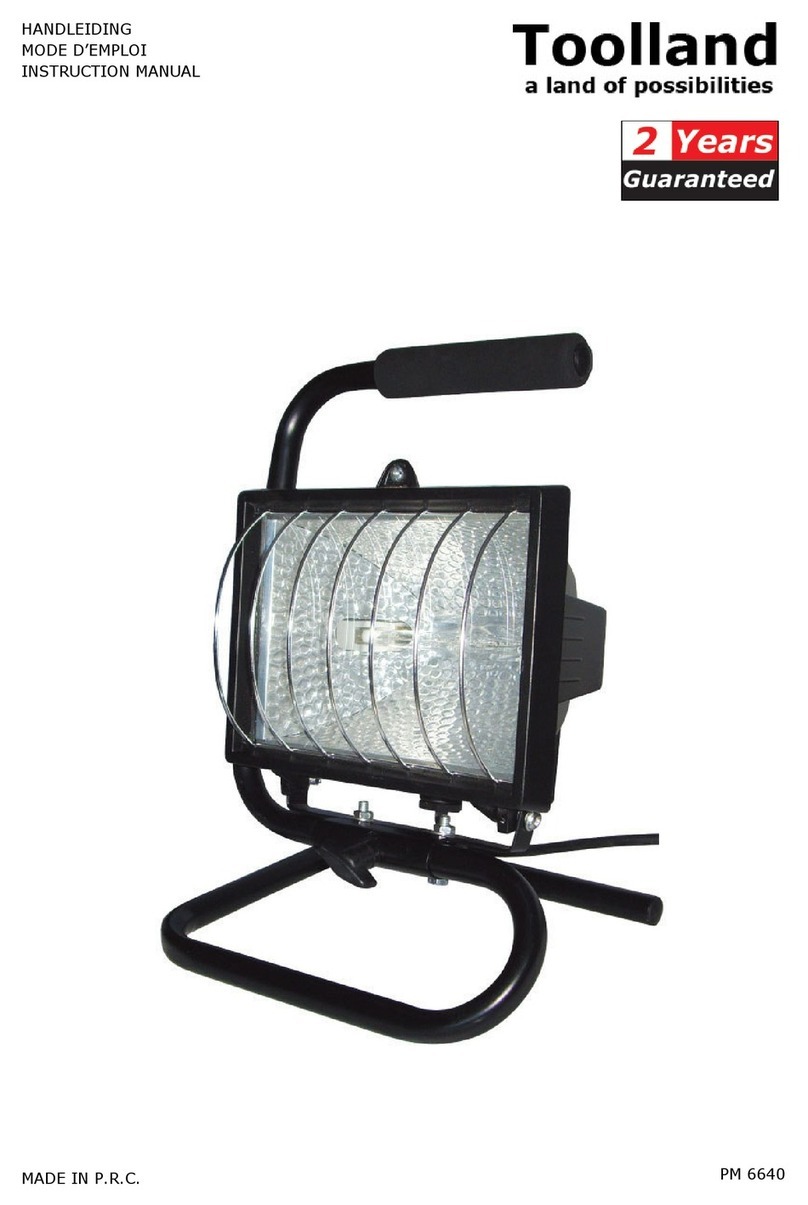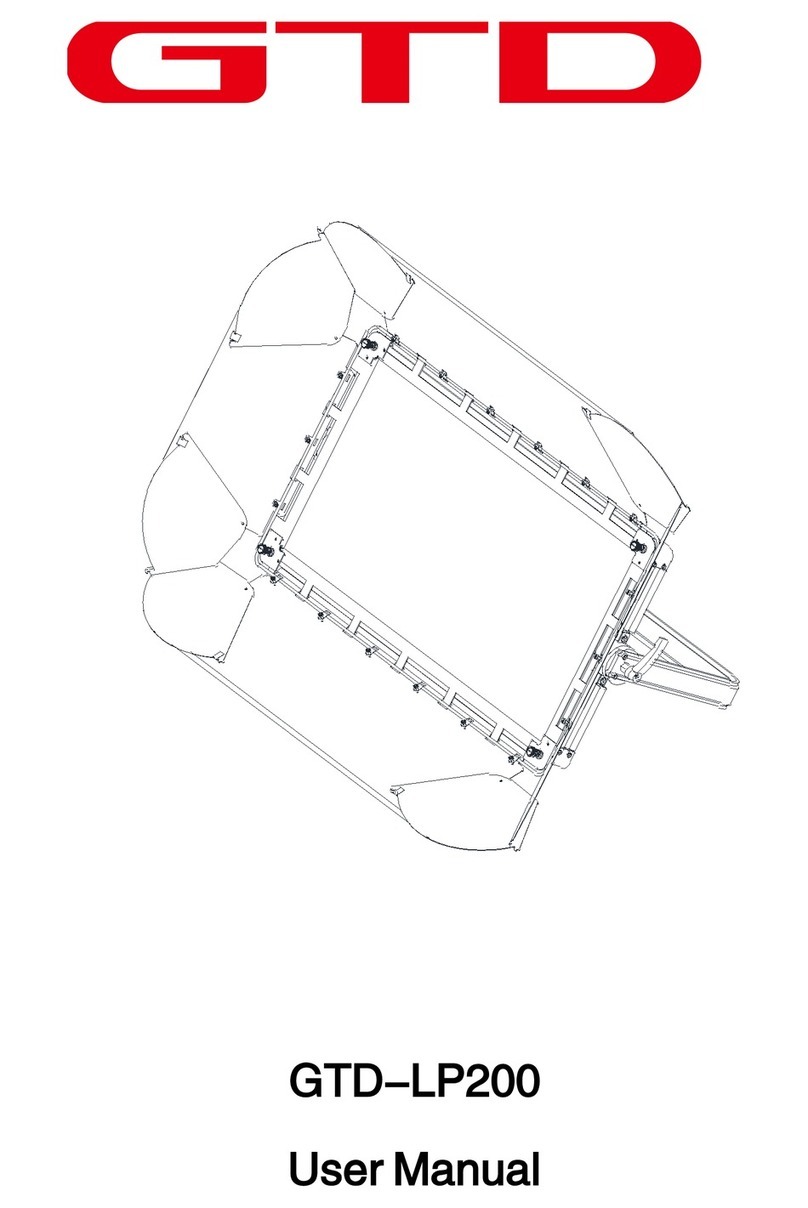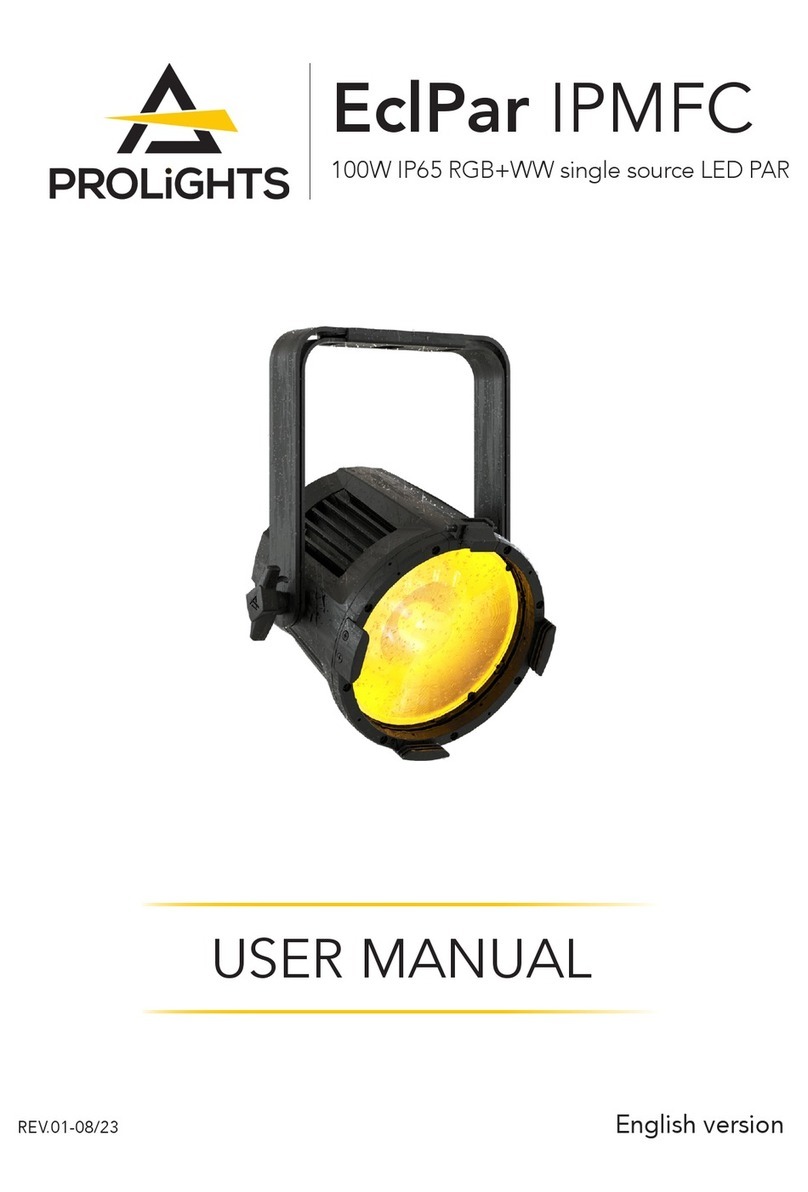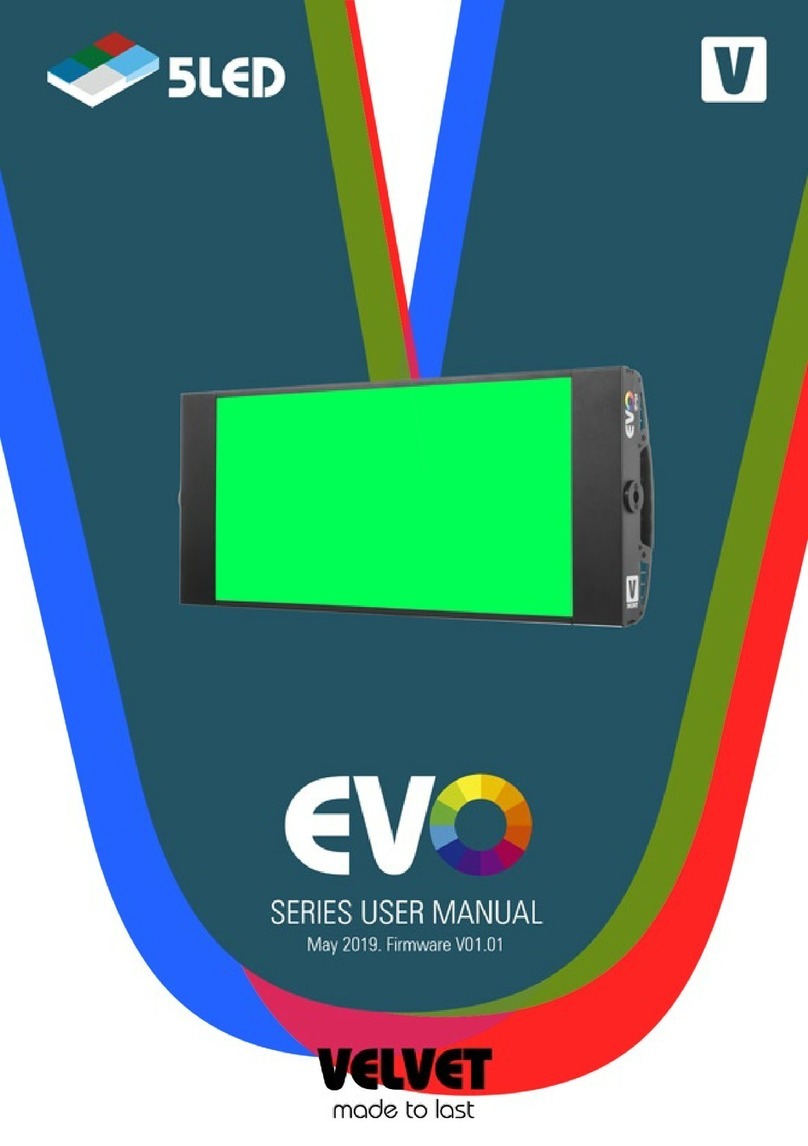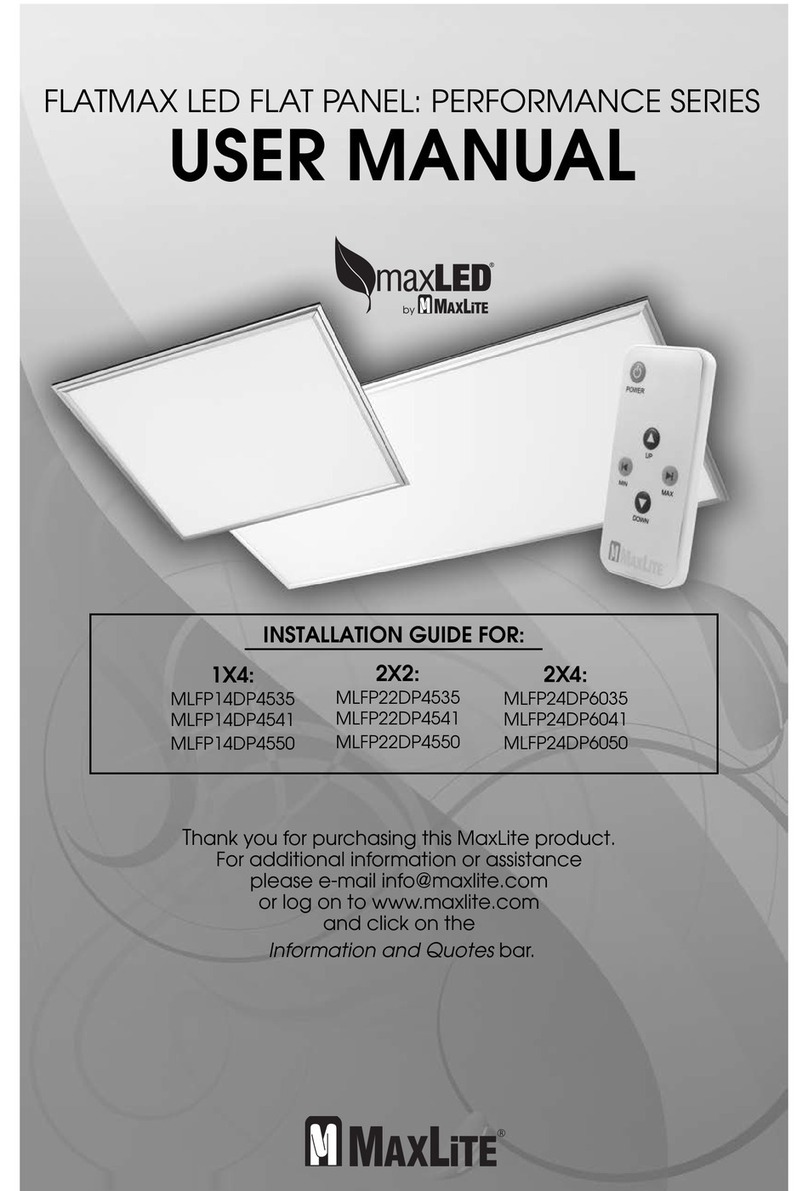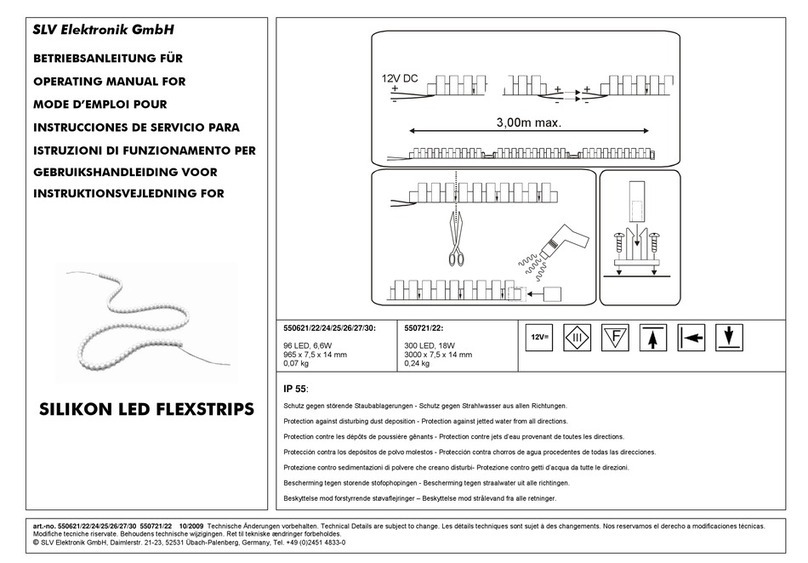NK-Optik Otoflash G171 User manual

________________________________________________________________________________________________________________
page 1 of 11
Otoflash G171
UV-flash curing device
Instruction Manual
Index
1) Device description
2) Initial operation of device
3) Important notes
4) Holding trays
5) Operation
6) Maintenance, cleaning, repair
7) Exchanging the flash-module
8) Transport, storing, disposal
9) Protective gas option
10) Technical data

________________________________________________________________________________________________________________
page 2 of 11
1) Device description
The Otoflash G171 device may be used for the curing of light-curable resins light-induced
polymerization. There are 2 bottom-mounted flash-lamps, operating at a frequency of 10
flashes per second.
Compared to polymerisation through continuous exposure, the curing by means of flashes of
light has the following advantages:
1.) At the same radiation dosage, the light intensity is between 1,000 to 10,000 times higher
(for the duration of the flash period of approximately 200 µs). Due to the higher intensity, a
correspondingly greater amount of free radicals are formed so that, subsequently, there are
more opportunities for recombination of the excited molecules. As a result, longer polymer
chains are formed and fewer residual monomers remain as compared to other sources of light.
This, in turn, leads to better biocompatibility. Furthermore, the process leads to improved
physical characteristics such as a higher Young’s modulus and a higher Vickers hardness.
The high intensity of the flashes also allows deeper penetration into the polymerization
material as a sufficiently large number of excited light quanta reach deeper layers. This is
particularly important for opaque materials.
Moreover, flash curing devices perform the curing process more quickly compared to other
devices. For example, compared to fluorescent tube devices, the curing may be up to 10 times
faster.
2.) Wavelengths of the light generated in the flashes spans across 280-700 nm. By covering
such a large part of the electromagnetic spectrum, the excitation of all common photo-initiators
is ensured, regardless of material manufacturer, thereby avoiding that the photo-initiator and
the light curing device are not matched to each other.
3.) The use of protective gas offers further advantages: by using protective gas (principally
nitrogen gas, N2) during the curing process to displace the oxygen in the polymerization
chamber, curing of the material without development of an inhibition (or adhesive) layer at the
surface is ensured. This, in turn,
- eliminates the need for further steps to later remove the inhibition (or adhesive) layer,
- produces a harder, more scratch-resistant surface,
- produces a smoother and more accurately fitting surface (of particular importance in the
production of precise cast pieces in dental, jewellery or industrial applications), and
- reduces the amount of residual monomers at the surface, improving bio-compatibility.

________________________________________________________________________________________________________________
page 3 of 11
2) Initial operation of device
Before initial operation, adjust the device to the correct voltage using the voltage selector
switch on the back of device (12).
When moving the Otoflash device from colder to warmer ambient temperature (e.g. transport
during winter), allow the device to acclimatize for a minimum of 2 hours before switching it on
(otherwise risk of flash-overs inside the device).
mportant Notices
Front side 8
1 2 3 4 5 6 7
Rear side
9 10 11 12 13 14
(1) Main switch
(2) Protective gas switch
(3) Protective gas display
(4) Display with keypad
(5) Start button
(6) Lamp control light
(7) Ready indicator
(8) Polymerisation chamber
(9) Fan
(10) Quick coupling plug
(11) Type plate
(12) Voltage selector switch (100, 115, 230 V)
(13) Power socket with fuse
(14) Operating hour counter
(11) Betriebsstundenzähler
Gas N2

________________________________________________________________________________________________________________
page 4 of 11
3) Important notes
- Switch the device off and disconnect it from the power supply before carrying out
any services or maintenance work (danger due to electric shock!)
- Do not, under any circumstances, look directly into the radiation of the flash-lamps
(risk of damage to eyes).
- Extended periods of irradiation may cause the polymerization chamber to heat up.
Therefore, it is recommended to wait a few seconds before opening the lid after the
end of polymerization (the fan will continue to run).
- The device will only work when the flash module is completely inserted. Likewise,
the lid must always be completely shut.
- Never operate the device without flash module.
- The dust filter behind the display on the front of the device should always be kept
clean (risk of over-heating and contamination).
- Depending on how dirty the dust filter is, it should be cleaned or replaced regularly
(see also point 7: Maintenance, cleaning, repair).
4) Holding trays
There are 2 types of holding trays available: Trays with and trays without UVB-block.
The type of tray necessary to avoid yellowing of the workpiece, for example, depends on the resin you
are using (please refer to requirements as specified by the manufacturer or distributor). Tray type
numbers are marked on the top edges of trays:
Type 280N2 = Holding tray without UVB-block: Light with wavelengths in the rage of 280 to 700 nm
can pass through the holding trays.
Type 360N2 = Holding tray with UVB-block: Light with wavelengths in the range of 360 to 700 nm can
pass through the holding tray (light with wavelengths below 360 nm is blocked).
Important:
A tray insert is strictly necessary when operating the device using the protective gas function.
The holding trays are designed to be used with nitrogen (N2). You must contact the device
manufacturer (NK-Optik GmbH) if you intend to use a different inert protective gas (e.g. argon or
carbon dioxide) to identify appropriate alternative trays.
Never use alcohol or alcohol-based cleaning products to clean the holding trays!
The holding trays have a limited lifetime due to the high-intensity irradiation they are subjected to. The
trays should be replaced after approximately 50 hours of usage time. In addition to this, the trays
should be replaced if they exhibit strong yellowing, or have been severely scratched or dirtied.

________________________________________________________________________________________________________________
page 5 of 11
5) Operation
Setting the timer
The device is switched on with the main switch (1). The green light indicator labelled “Ready”
(7) will light up and 4-digit figure will appear on the display (4). This figure indicates the
number of flashes. The number of flashes can be programmed any number between 0 and
9999 by pressing the buttons 1000, 100, 10 and 1.
Work mode
The programme is started by pressing the start button (5). The timer will start to count down
with every flash. When the programmed number of flashes has been completed, an acoustic
signal will sound three times and the word “End” appears on the display. Afterwards, the timer
will be set to the initially programmed number of flashes again. Should the lid be opened
during the process, the entire device will immediately be disconnected from the power supply
(except the timer), the word “open” appears on the display and a long acoustic signal will
sound. Thus, the programme can be interrupted at any time by opening the lid. After closing
the lid again, the programme will return to the initially programmed number of flashes.
Error message
The red field on the display labelled “Lamp” (6) will light up if one or both of the lamps are
defective.
Protective gas
Please refer to instructions under item 9: “Protective gas option” if using the protective gas
option.
Table of contents
